World Class Textile Producer with Impeccable Quality
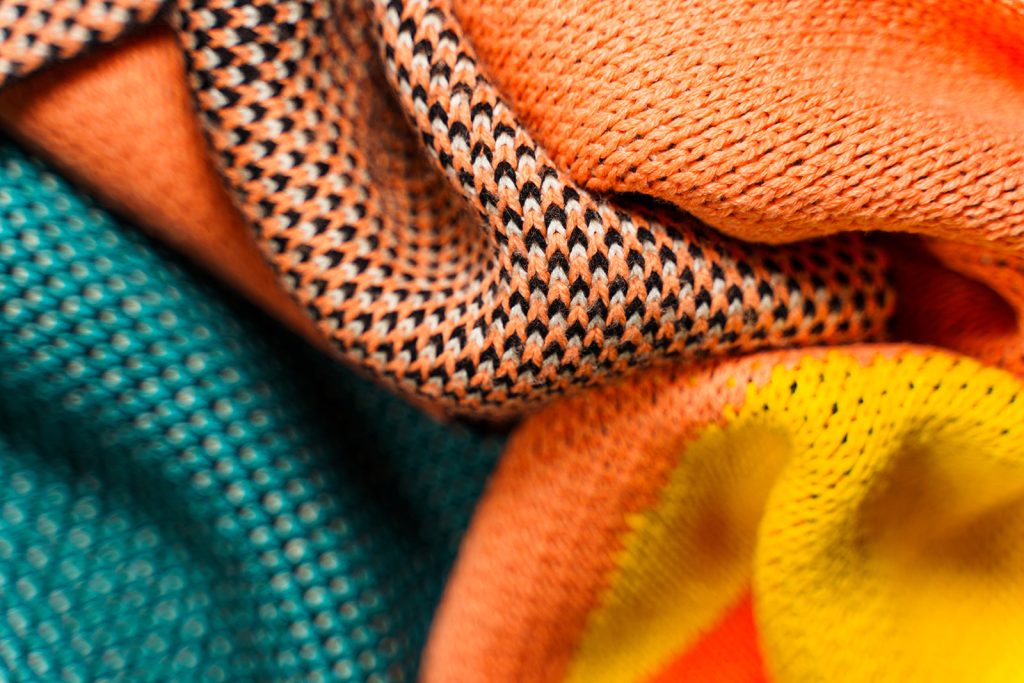
World Class Textile Producer with Impeccable Quality

Knitted fabrics, with their diverse textures and uses, are integral to the fashion and textile industry. Each type of knit fabric, from Double Knit to Ponte Roma, offers unique properties and applications, making them essential in various clothing and accessories. Let's delve into the fascinating world of these fabrics, exploring their characteristics, manufacturing processes, and uses.
Double knit fabric stands out due to its unique construction involving two sets of needles. This technique creates loops on both sides, interweaving them to prevent separation. The result is a fabric double the thickness of regular knits, providing stability akin to woven materials. Double knits are made by knitting machines with a specific needle arrangement, creating a robust, shape-retaining fabric that can be cut and sewn, unlike traditional woven fabrics. They are also amenable to reshaping through steam pressing, making them ideal for structured parts of garments like collars and cuffs.
In addition to its fundamental properties, Double Knit fabric excels in durability and adaptability, making it a preferred choice for various apparel. Its robust nature ensures that garments retain shape and appearance over time, resisting stretching, fading, and wear that often plague less sturdy materials. This durability translates into a longer lifespan for clothing items, making Double Knit an economical and sustainable choice in the fashion industry. Moreover, its versatility extends beyond clothing; it's increasingly popular in home décor and upholstery, where its stability and aesthetic appeal are equally valued. This fabric's ability to blend aesthetics with functionality makes it a cornerstone in fashion and interior design, offering endless possibilities for creative and practical applications.
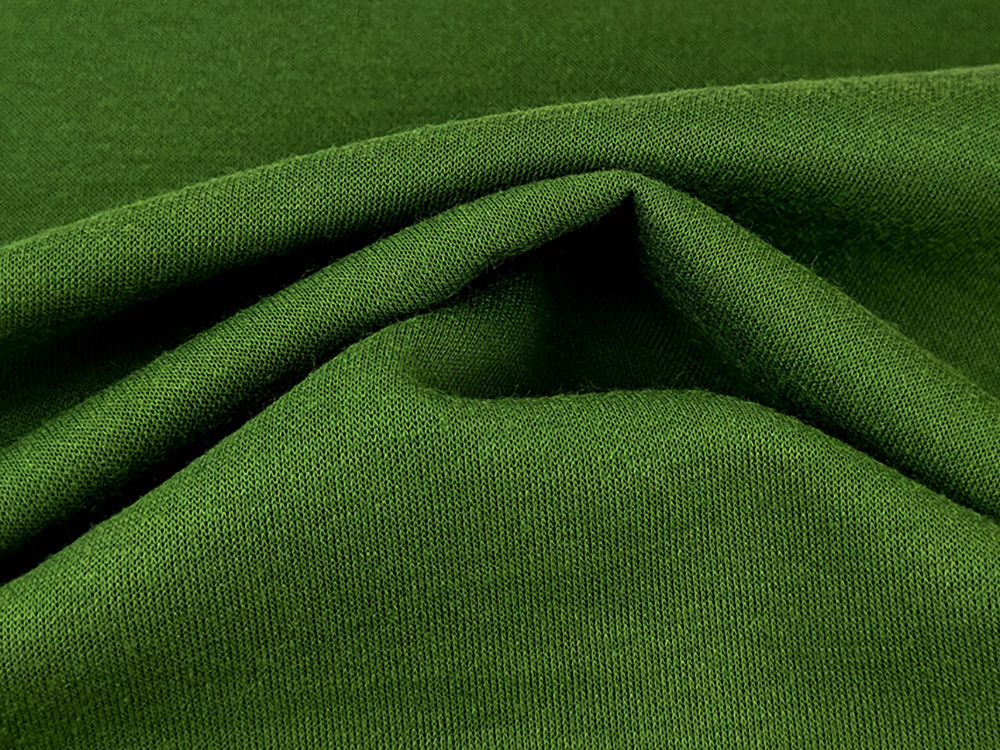
Jersey knit, produced using a single knit technique, is known for its stretchability without additional fibers like elastane. Originally made from wool, today's jersey knits come in cotton, silk, and synthetic fibers. Their stretch, softness, and durability make them famous for t-shirts, bedding, and sheets. The specific characteristics of jersey knit depend on the fiber used, but all share qualities like softness, durability, and resistance to tears and creases.
Beyond its comfort and versatility, Jersey Knit stands out for its exceptional breathability, making it an ideal choice for warm-weather clothing and activewear. Its ability to allow air to circulate freely through the fabric helps maintain a comfortable body temperature, making it a favorite for sports jerseys and summer dresses. Additionally, the increasing availability of Jersey Knit made from organic and sustainable materials like bamboo and organic cotton reflects a growing eco-consciousness in the textile industry. These eco-friendly options offer the same softness and durability while reducing environmental impact. This advancement caters to the environmentally aware consumer and signifies the evolving nature of Jersey Knit as a fabric that combines comfort, functionality, and sustainability.
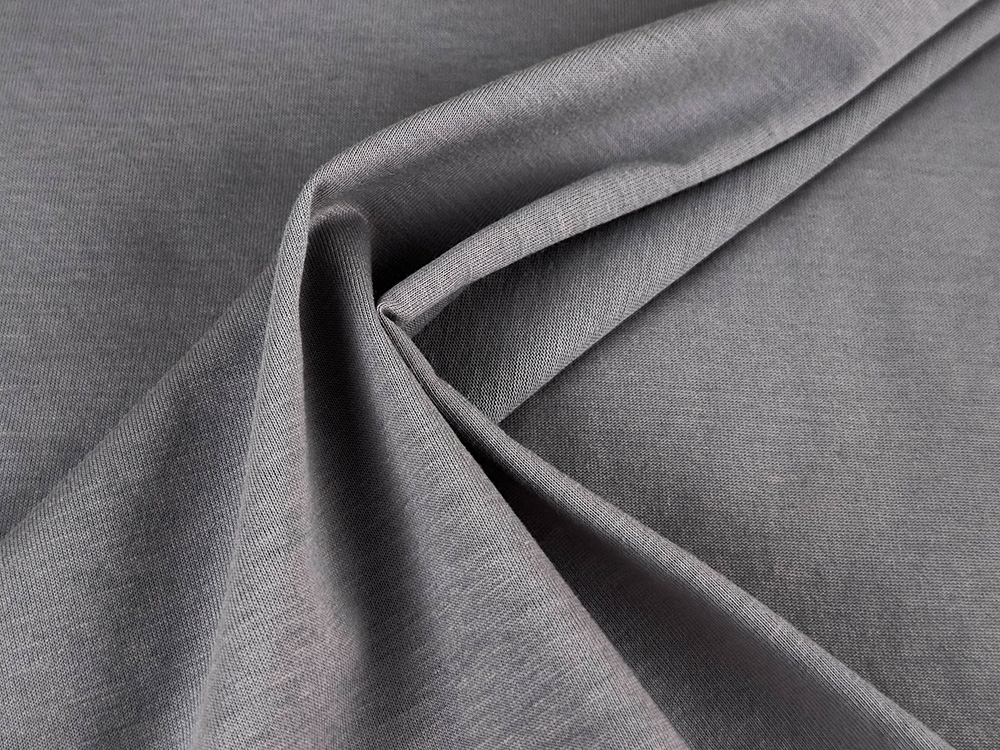
Slub knit fabric, created using a single knit technique, is distinctive for its textured feel. The yarn used has varying thicknesses, resulting in an irregular texture and unique color absorption. Once considered a defect, slub knit has gained popularity for casual wear, lending itself to t-shirts, dresses, and sweaters.
The artistic appeal of Slub Knit fabric extends its usage beyond casual wear into the realms of high fashion and designer clothing. The yarn's irregularities create a unique texture that adds depth and character to designs, making it a favorite among designers. This fabric's distinctive look provides a canvas for creative pattern designs, color variations, and innovative garment styles, from avant-garde dresses to bespoke casual wear. Furthermore, Slub Knit's adaptability to various dyeing techniques enhances its appeal, allowing for a broad spectrum of colors and shades that showcase the fabric's unique texture. This combination of artistic allure and fashion versatility makes Slub Knit a dynamic player in contemporary textile design, offering endless possibilities for creative expression in clothing and accessories.
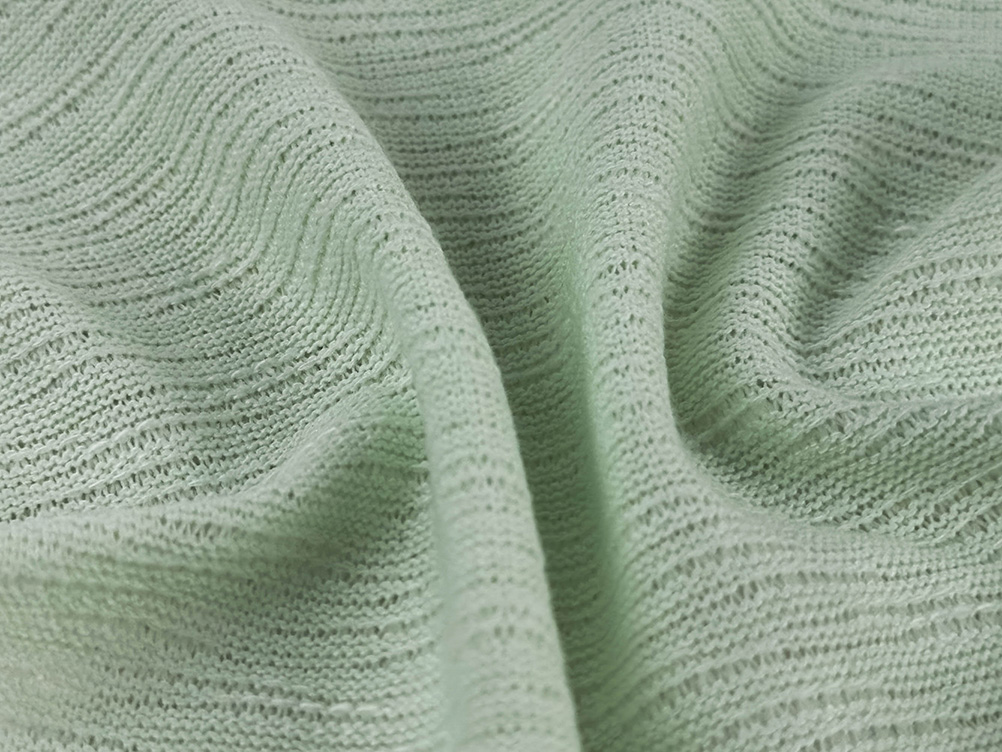
Purl knit employs a specific knitting stitch to create textured patterns in the fabric. The purl stitch, the opposite of the knit stitch, is made by pulling yarn through the back of the loop. This technique is versatile, used to create patterns like ribbing, seed stitch, and garter stitch, each providing different textures for items like scarves, blankets, and dishcloths.
Purl Knit, with its intricate textured patterns, also holds therapeutic and educational value. Engaging in the process of creating purl stitches can have a therapeutic effect on the mind, promoting relaxation and reducing stress levels. Moreover, this activity provides an opportunity to improve fine motor skills and cognitive abilities. Engaging in purl knitting can be a gentle exercise for the brain, aiding in concentration and pattern recognition, making it a popular activity in various therapy and learning settings. Additionally, purl knitting's versatility in pattern creation allows individuals to express creativity and develop a sense of accomplishment. This aspect makes it particularly beneficial in educational environments, where learning the art of purl knitting can foster an understanding of achievement and encourage artistic expression among students of all ages.
Interlock knit is a variation of double knit fabric known for its stretch and excellent drape. This fabric is produced using two sets of needles, resulting in a fabric where the front and back are identical, appearing as two interlocked layers. Its tight-knit offers a smooth surface, making it ideal for activewear, sportswear, and dresses. The fabric is easy to work with, soft, absorbent, and maintains its shape well.
Recent technological advancements in textile manufacturing further enhance Interlock Knit's attributes. These innovations allow for greater precision and consistency in the knit, leading to higher-quality fabrics with improved stretch and drape qualities. Additionally, modern knitting technology enables customization in the density and pattern of the knit, opening up new possibilities for bespoke fabric designs tailored to specific fashion or functional needs. This flexibility is particularly advantageous in sportswear and technical apparel industries, where the fabric's performance is crucial. The ability to fine-tune the properties of Interlock Knit means that it can be engineered to offer optimal levels of breathability, moisture-wicking, and thermal regulation, making it a highly sought-after material for creating high-performance athletic wear and specialized garments.
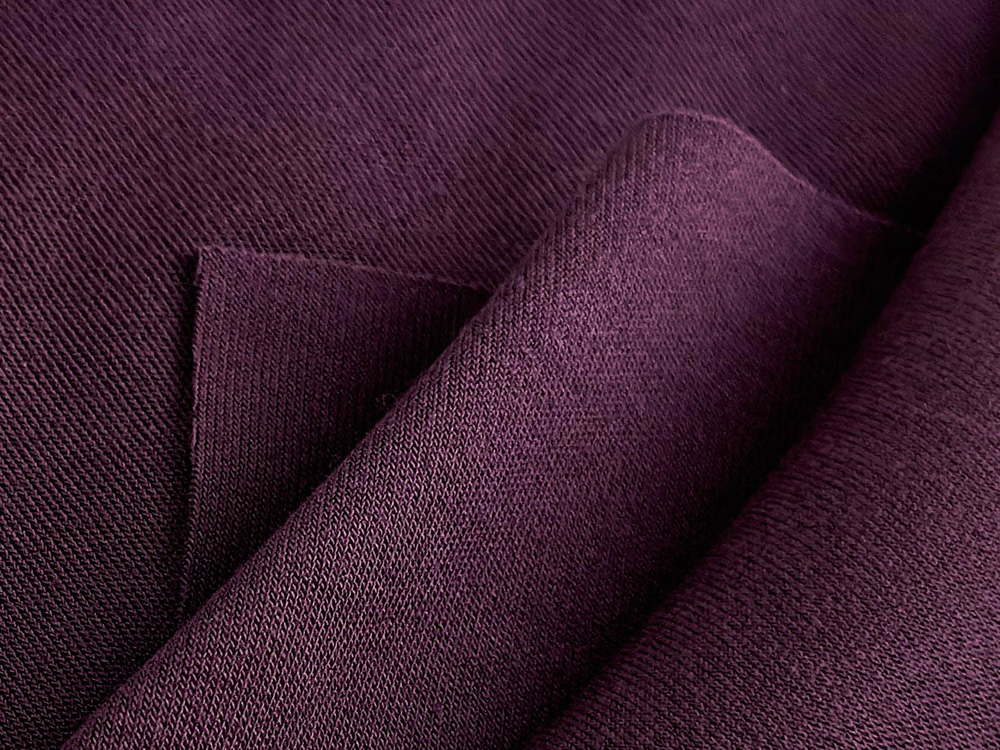
Rib knit is characterized by its visible perpendicular ribs, offering a stretchy, reversible fabric. Made using a single-knit technique, it differs from jersey and interlock knits in texture and stretch. Rib knit is frequently used for bands on t-shirts, sweaters, and cuffs, offering flexibility and comfort.
The utility of Rib Knit extends beyond traditional clothing applications, becoming increasingly prevalent in inclusive fashion designs. Its natural stretch and flexibility make it an ideal fabric for adaptive clothing, catering to those with diverse body types and mobility needs. This adaptability is particularly beneficial in creating garments that are easy to put on and take off, offering comfort and convenience for individuals with physical limitations or requiring assisted dressing. Rib Knit's stretchy fabric also complements various body shapes, promoting inclusivity in the fashion industry. Designers are leveraging this fabric's unique properties to create stylish, functional garments that are accessible and comfortable for all, signaling a shift towards more thoughtful, inclusive fashion practices.
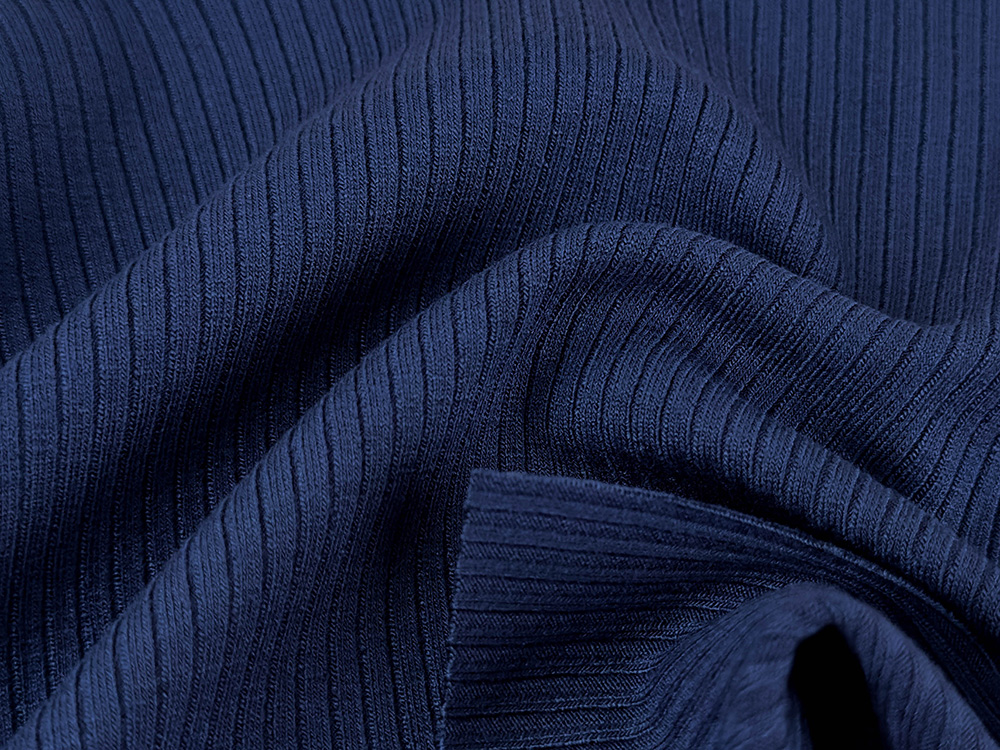
Ponte Roma knit is a luxurious double-knit fabric known for its firm yet stretchy nature. Made from a rayon, polyester, and spandex blend, it is available in various weights for different clothing types. Ponte knit stands out for its stable appearance, two-way stretch, and resilience, making it a choice material for pencil skirts, sweaters, and activewear. It is soft, firm, absorbent, and maintains shape, making it ideal for stylish yet comfortable fashion.
Ponte Roma knit, renowned for its elegance and resilience, is also making significant strides in cross-industry adaptability. Initially a staple in fashion, it now finds applications in sectors like performance wear and home furnishings, where its durability and aesthetic appeal are equally prized. The fabric's structure, offering comfort and support, is ideal for ergonomic office wear and upholstery, blending functionality with style. Additionally, the textile industry's growing focus on sustainability is influencing the production of Ponte Roma. Developing eco-friendly variants, utilizing recycled materials and sustainable production processes, enhances its appeal to environmentally conscious consumers. This shift aligns with global sustainability goals and opens new avenues for Ponte Roma in green fashion and eco-design sectors, highlighting its versatility and ongoing evolution in the world of textiles.
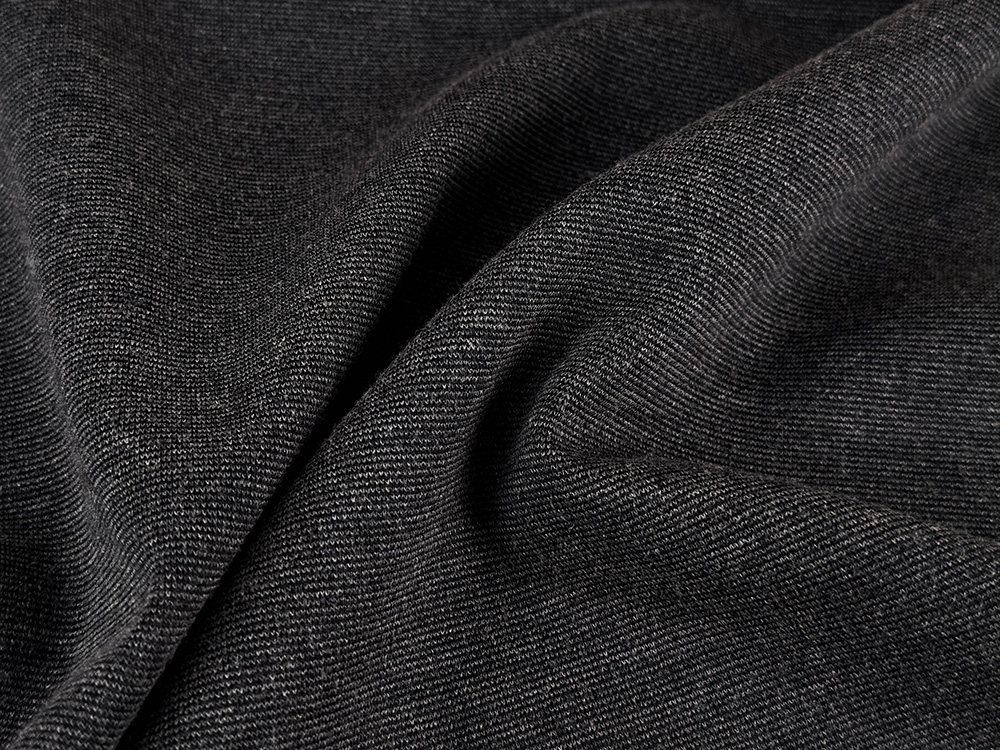
Each type of knit fabric, from the sturdy Double Knit to the elegant Ponte Roma, offers unique characteristics that make them indispensable in the textile industry. Whether it's the stretchability of Jersey and Slub knits, the textured patterns of Purl knit, the smooth drape of Interlock knit, the flexibility of Rib knit, or the luxurious feel of Ponte Roma, these fabrics cater to a wide range of fashion needs, blending comfort with style. The choice of knit fabric ultimately hinges on the desired application and the specific qualities needed in the final product, showcasing the versatility and innovation of knitted textiles.